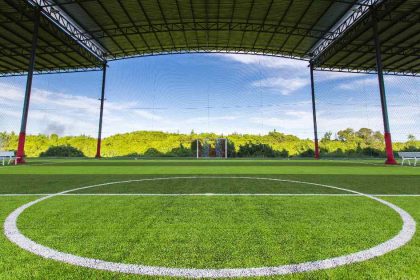New research highlights the uneven distribution of high-aptitude teachers within NSW secondary schools, with data suggesting that students in disadvantaged and rural areas are less likely to be taught by high-aptitude teachers.
The findings from the e61 Institute reveal significant disparities in access to high-aptitude teachers across NSW secondary schools, creating a concerning imbalance in educational resources across the state.
The e61 Institute is a non-partisan economic research institute that utilises state-of-the-art tools from economics, statistics and data science to explore innovative data in an attempt to answer the key economic questions Australia faces.
Links between high-aptitude teachers and affluent areas
“Our research uncovers significant inequities in access to high-aptitude teachers across NSW. Higher-aptitude teachers tend to work in more affluent areas with higher students’ performance, while lower-aptitude teachers tend to work in more disadvantaged areas with lower students’ performance,” e61 Institute Research Manager Dr Silvia Griselda says.
“This is crucial because a more even distribution of high-aptitude teachers could help reduce educational and social inequities by providing more equal access to learning opportunities.”

ATAR results help assess academic aptitude
The e61 Institute research used teachers’ prior academic achievement – specifically their ATAR scores – as a measure of their academic aptitude. Although it is not the sole determinant, previous research shows that academic aptitude is one of the most consistent predictors of a teacher’s ability to improve students’ academic performance – especially in secondary schools.
Combining this measure of aptitude with information on teachers’ place of work and students’ NAPLAN performance, the e61 research found a strong positive correlation between the academic aptitude of teachers in a geographical area and the performance of students. This could partly reflect the role of high-aptitude teachers in improving student performance.
Overcoming educational inequality
But a key part of the story is that high-aptitude teachers tend to cluster in more affluent areas, where non-school factors such as parental education and income also help create a more positive and conducive learning environment.
The geographic areas where high-aptitude teachers were most likely to work included Sydney’s affluent North Shore and Eastern suburbs, as well as the mid-north coast of NSW around Port Macquarie.
e61 Institute Senior Research Economist Jack Buckley says that “the correlation between the academic aptitude of high-school teachers and the performance of students is particularly strong within Sydney, which suggests that this is not simply an urban-rural divide”.
“The geographical concentration of high-aptitude teachers in more affluent areas is quite concerning and could be perpetuating educational inequality, especially within Sydney,” Mr Buckley says.
High-quality teachers help students achieve
“Evidence suggests that high-quality teachers are the single most important school-related determinant of student achievement. Teachers who have strong subject matter knowledge and a passion for teaching are more likely to use effective teaching strategies. They are also particularly important for disadvantaged students, who benefit the most from an increase in teacher quality,” he said.
Dr Griselda says that, while it is often the case that workers with higher ATARs choose to work in more affluent areas, the rate is much higher among teachers. This is especially concerning as skilled teachers play a crucial role in helping to equip disadvantaged students with the skills they need to thrive.
“One of the reasons teachers may be working in more affluent areas could be due to ‘home bias’. Teachers with higher past academic achievement may have grown up in higher socio-economic areas and may want to work in a similar location to where they grew up,” Dr Griselda says.
“Another potential explanation is that teaching in disadvantaged schools may be more demanding, but generally pays a similar amount,” she says.
Encouraging quality teachers to take roles in disadvantaged schools
e61 Institute CEO Michael Brennan said policymakers should see reducing regional disparities in teacher quality as an important part of providing all children with equal access to educational opportunities.
“More research is needed to determine how we can encourage more high-aptitude teachers to work in disadvantaged areas, and whether additional support is required to support the development of teachers in these areas. But what is clear is that to achieve a more efficient and equitable education system, we almost certainly need a more efficient and equitable distribution of high-aptitude teachers.” Mr Brennan says.







